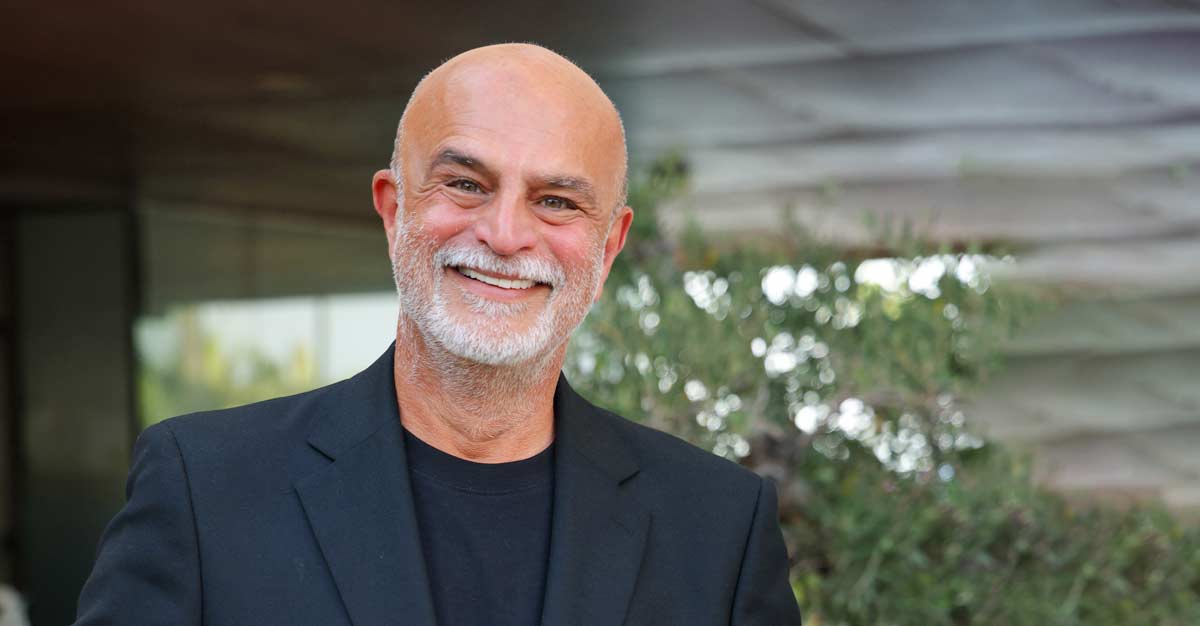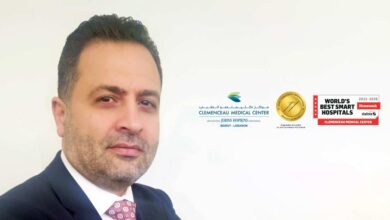Non-Transfusion-Dependent Thalassemia

In a major achievement for Lebanese medicine, Professor Ali Taher, a leading expert in hematology and oncology, has published the results of a groundbreaking clinical trial in the prestigious medical journal The Lancet. Dr. Taher, who holds multiple key positions at the American University of Beirut (AUB) and the Chronic Care Center, was the lead researcher on a clinical trial for a new thalassemia treatment. The successful outcome of this study is a testament to Lebanon’s medical and scientific excellence.
This achievement represents the world’s first proof of the efficacy of an oral, disease-modifying therapy for patients with alpha- and beta-thalassemia who are not dependent on regular blood transfusions, offering new hope to patients in Lebanon, the region, and worldwide. It also affirms Lebanon’s ability, despite all challenges, to lead medical research that impacts global healthcare.
What was your role in creating and leading this global study? What were the biggest challenges you faced in making it happen?
I had the honor of leading this multinational study, which represents the first strong scientific evidence for the efficacy of an oral, disease-modifying therapy in non-transfusion-dependent thalassemia (NTDT). In addition to scientific oversight, my role included designing the study protocol in collaboration with an international team of experts and ensuring adherence to the highest standards of clinical research. One of the main challenges we faced was recruiting a sufficient number of patients from various countries, while ensuring that all research teams adhered to strict procedures despite differences in healthcare systems and logistical environments. Moreover, the global COVID-19 pandemic posed unprecedented obstacles to our workflow.
In your opinion, how does the success of this study reflect the scientific stature of Lebanese physicians and their contributions to advancing treatment and medical research globally, despite Lebanon’s difficult circumstances?
This achievement clearly demonstrates that medical and scientific innovation know no boundaries. Lebanese physicians, particularly those at the American University of Beirut, have repeatedly proven their ability to lead in clinical research and to actively contribute to the development of modern therapies.
Despite severe economic and living crises, we have maintained our position as key contributors to scientific research and proven that Lebanon can continue advancing medicine worldwide. I would also note my participation in two major studies on thalassemia: one on non-transfusion-dependent thalassemia, where I served as principal investigator, and another on transfusion-dependent thalassemia, where I was a co-investigator. In both, I was involved in protocol development and oversight. The main difference between them lies in the therapeutic goal: in NTDT, we aim to raise hemoglobin levels; in transfusion-dependent thalassemia, the goal is to reduce the frequency of transfusions or extend the interval between them.
How does this achievement enhance the position of the American University of Beirut and the Chronic Care Center in Lebanon as a regional hub for research and clinical excellence?
This study once again confirms that AUB is a true scientific beacon in the region, capable through its physicians of leading research published in The Lancet, one of the world’s most prestigious journals. It reflects our commitment to evidence-based research and to serving patients both locally and globally.
The strength of this study lies in multiple dimensions. It is not merely an academic publication from AUB and the Chronic Care Center, which already lends it credibility. More importantly, its results will directly contribute to the U.S. Food and Drug Administration (FDA) approval process for the drug. This means that Lebanese research efforts will help secure global approval of a therapy, demonstrating Lebanon’s role in medical innovation and paving the way for making this treatment available worldwide, including in Lebanon.
What motivated you to lead this global clinical trial? What objectives did you set when designing it?
My driving motivation was a deep commitment to improving the quality of life for patients with thalassemia, particularly those who do not receive regular blood transfusions and whose treatment needs remain unmet. The primary objective was to evaluate the efficacy and safety of “Mitapivat” as an oral therapy that can sustainably raise hemoglobin levels, reduce disease burden, and transform clinical care for these patients.
Speaking of this patient group, could you explain what non-transfusion-dependent thalassemia (NTDT) is and what complications it involves?
NTDT includes conditions such as thalassemia intermedia and hemoglobin H disease, where patients have chronic anemia but do not require regular transfusions to survive. They may occasionally need transfusions during critical periods such as pregnancy, severe infection, or after an emergency splenectomy.
NTDT can still cause serious complications. Patients suffer from chronic anemia, leading to persistent fatigue and weakness. Ineffective red blood cell production disrupts iron metabolism, resulting in iron overload due to increased absorption. Other common complications include thrombosis, pulmonary hypertension, splenomegaly, osteoporosis, and leg ulcers.
How does NTDT differ from transfusion-dependent thalassemia in terms of treatment needs and patient challenges?
When discussing thalassemia, we distinguish between three categories:
Thalassemia trait carriers: These individuals show no symptoms but carry the genetic mutation. They need to be aware of the risk of having children with thalassemia major if they marry another carrier.
Thalassemia intermedia (NTDT): This is the group targeted by our study. Unlike thalassemia major, these patients do not need lifelong transfusions to survive. However, their hemoglobin levels remain chronically low, leading to fatigue and complications. They may still require transfusions in certain situations such as pregnancy, before surgery, or after trauma.
Thalassemia major (transfusion-dependent): These patients require regular transfusions every 2–3 weeks for survival.
Our current study aims to provide an oral therapy for NTDT patients to raise hemoglobin levels and improve daily living, which is always the ultimate goal of research.
Why have treatment options for these patients been lacking until now?
Most previous research focused on transfusion-dependent patients, as their needs were considered more urgent. NTDT patients were often mistakenly thought to be at lower risk, and their complex needs were not adequately addressed. These delayed studies aimed at modifying their disease course.
How does “Mitapivat” work as an oral, disease-modifying therapy in thalassemia?
Mitapivat is an activator of the pyruvate kinase enzyme in red blood cells. It improves energy production within the cell, reduces cell breakdown, and consequently raises hemoglobin levels. This cellular adjustment allows the drug to alter the natural course of the disease and relieve chronic anemia symptoms.
What was the safety and tolerability profile of the drug during the trial? Were there any unexpected findings that could influence future research directions?
The drug demonstrated a very favorable safety profile, with most side effects being mild to moderate and manageable. No serious unexpected adverse events occurred, reinforcing our confidence in its broader potential use. However, long-term monitoring and additional studies will be needed to confirm its safety over time.
How could “Mitapivat” change the global treatment landscape for NTDT patients?
Mitapivat represents a paradigm shift because, for the first time, it offers an effective, sustainable oral option for these patients.
Instead of relying on intermittent transfusions or non-targeted therapies, they can now receive a treatment that modifies the disease itself, potentially transforming care strategies worldwide.
How does this study build upon previous efforts at AUB and the Chronic Care Center, such as the THALASSA and BEYOND trials?
The THALASSA and BEYOND trials paved the way for a deeper understanding of NTDT patients’ needs and highlighted the efficacy of treatments that adjust iron balance or stimulate hemoglobin production. The Mitapivat study builds on this foundation but takes a further step by directly modifying the disease process at the cellular level, making it a natural continuation of this research path.
What impact could these results have on patients’ quality of life and long-term health?
Sustainably raising hemoglobin levels directly improves energy, concentration, and reduces complications of chronic anemia, such as splenomegaly or osteoporosis. Over time, it can decrease the need for medical interventions and lessen the psychological and social burden on patients and their families.
What are the next steps after publishing these results in The Lancet?
The next step is to work with regulatory authorities worldwide to secure clinical approval of the drug. We also plan to conduct additional studies in different age groups, including children, and to assess its role in integrated treatment strategies. In parallel, we are raising awareness among physicians and medical centers to incorporate this breakthrough into clinical practice.
Further publications on transfusion-dependent thalassemia are also in the pipeline. It is important to remember that the ultimate mission of medicine is not only to prevent disease but also to promote health and well-being. This principle has always guided my work, and I believe the results of this study represent a meaningful step toward fulfilling that mission for thalassemia patients worldwide.














